From Iceland (see previous post), Taylor, Ty, and I took a red-eye flight to the Czech Republic. At the time when we booked it, we thought we’d get six hours of rest on the plane (leaving after midnight and arriving after 6AM) but turns out there’s a 2-hour time difference between the two countries. But hey, flying overnight is one way to save on accommodation expenses. 😉
Our experience in Prague was vastly different than Iceland’s. In Iceland we often sightsaw in rural areas, so we didn’t have many barriers to the language or culture. While there were other tourists around in Iceland, we didn’t typically interact. However, being in the midst of Prague changed all of that.
Prague, or Praha to the locals, is located in the Czech Republic where the primary language is Czech. I didn’t mention it in my Iceland post, but one could draw conclusions based on the names of sights that the Icelandic language is complex. Czech is another language that isn’t all too common (i.e., I’m generalizing here, but Americans typically gravitate to Spanish, French, Italian, etc.). At times, there was a definite language barrier or a heavy Czech accent challenging my understanding of the locals’ English. I wish that I had better prepared my Czech vocabulary. ❤ Pro tip: Make a simple “cheat sheet” with common phrases and words (and make sure you know how to pronounce them) before traveling abroad. My favorite European tour guide did this for me on a previous Europe trip.
| English | Czech |
| Hello | Dobry’ den |
| Thank you | Děkuji |
| Yes | Ano |
| No | Ne |
| Please | Prosím |
| Do you speak English? | Mluvite anglicky? |
| I don’t understand | Nerozumim |
I am reminded of a specific time language was a barrier at the hostel. We can laugh about it now but at the moment it was confusing and maybe a little unsettling. One night (or should I say morning) at 3 AM, we were startled awake by a woman’s voice over the intercom system, speaking a language we didn’t understand, presumably Czech. Considering guests in the hostel were from all over the world, we hoped there would be an English translation of the message. While I tried to use Google Translate to understand, someone thought the message was informing us that the WiFi was out (again, it was 3 AM but also first-world problems being overseas). Unfortunately, when the English translation came on it was cut off after “attention, attention” (convenient, right?). Up until this point, we stayed in our room but since the voice continued speaking, I hopped out of bed and peeked into the hallway to investigate the situation. There were other people who were just as confused as we were and others going down the stairs and out of the building. Well, turns out the announcement was a fire alarm. Yep, that’s right, no “traditional” warning lights and sounds to alert us, just a calming voice. Just as we left the room, we were told it was a false alarm. Talk about an eventful night in Prague!
This might be an appropriate time to talk about hostels. People seem to have a negative perception of hostels. I’m here to tell you they aren’t a big deal. Yes, they aren’t as private as hotel rooms. But, many hostels are nice and modern. The greatest appeal of hostels is that they foster a greater sense of community which makes it easier to meet other travelers on the road. There can be a range of hostels, in terms of quality (similar to hotels) where some are better than others. Do your research beforehand and find something you’re comfortable with. In Prague, we stayed in a mixed-gender four-bed room at Mosaic House. Since there were only three of us, the fourth bed would be available to other travelers to book.





During our three-night stay, we cycled through two different roommates. Both, as Ty pointed out, were male. His reasoning? If women are traveling solo, they are more likely to book an all-female dorm than mixed gender. It’s the realities and precautions you take as a woman when traveling solo. Our first roommate was also from the U.S., Denver specifically, and had been traveling through Germany when our paths crossed. We didn’t see him much which we didn’t mind since he was a bit odd during our few interactions… Our second roommate had just moved from Brisbane, Australia, and was staying in the hostel while his flatmate’s parents were in town. We had the chance to chat with him a bit one night. He was pretty cool! The first time he visited Prague was when he moved from Australia for his job; talk about a big move. He also shared that he’s in a band. You can check out The Sick Kind here. Meeting people while traveling, no matter how significant or insignificant our interactions, continues to be one of my favorite parts of the experience.
Day One
Prior to visiting Prague, I heard from others to be careful if taking a taxi in Prague because they tend to upcharge tourists. People advised using other means instead, such as the myTaxi app. Uber also operates in Prague, so we used it to get from the airport to the hostel. It was easier to take a car into the city since the airport is located about 30 minutes away. Since we only actually took an Uber once or twice, the scope of our experience is limited but we had a wild ride. The driver who took us into the city from the airport drove fast. I’m talking 140 kilometers per hour (87 mph) in a 70 kilometers per hour (43 mph) zone fast. [Did you know only three countries in the world don’t use the metric system? They are the U.S., Burma, and Liberia.] I tried not to worry too much because I trusted the driver wouldn’t let anything happen to himself and his car (which also included us as passengers that day), but it was certainly a little nerving because we were driving through suburbs and not on a highway.
If this story has you shaken from taking a taxi OR an Uber in Prague, don’t worry. There is also convenient public transportation available to get around. We opted for a three-day pass, though there are other options too. This pass gives you access to the tram, bus, and subway systems for however long your pass is valid. Prague (and Berlin) operates on the honor system. Once you purchase your ticket, you must validate it the first time you get on the bus, tram, or subway. From that point on, there’s no need to check in and out when you ride. You only need to have the ticket on you in case someone were to ask. Easy enough, right? Don’t try and beat the system, or you will likely get ticketed (ironically)!

Our first stop in the city was Letna Park, which was suggested for its scenic views. There is also supposedly a beer garden, but we didn’t find it. Instead, we stumbled upon a festival with activities and food tents. Our first meal in Prague was paella and grilled cheese. It was fantastic!



We walked around the park for a while before walking over to the Royal Gardens. [A general observation about Europe: it isn’t unusual for there not to be public restrooms or, if there are, to have to pay to use the facilities. I mention it because this can often surprise people. Though I will say, when you have the pay to use a restroom in public it is generally kept up.] Upon entry to the Royal Gardens, we had to go through security where our bags were checked and we went through a metal detector. There were also many guards around the grounds. I wasn’t sure whether it should invoke a piece of mind or worry about their heightened presence. Their
requirements to become a Prague Castle Guard are fairly strict: individuals must meet certain educational requirements, pass psychological examinations and security clearance, and be of certain physical characteristics. It is notable to see the ceremonial changing of the guards which happens each day at noon. We missed the event but we saw many pass by during our visit (as seen in the video above).

According to the Guinness Book of Records (and Wikipedia), Prague Castle is the largest ancient castle in the world. It is free to visit the property, but you can buy tickets to enter a number of buildings, including St. Vitus Cathedral (its impressive stained glass work is pictured above), Old Royal Palace, St. George’s Basilica, Golden Lane with Daliborka Tower, Rosenberg Palace, and any featured exhibitions. We climbed 287 steps to the top of the Great South Tower of St. Vitus Cathedral to see the Castle from a bird’s eye view. As you climb the stairs you can actually see the inside of the clock. The clock bell is the biggest in the Czech Republic which famously predicted a disastrous flood in 2002. Within in the Castle, you can also stroll down Golden Lane, a little row of houses where the royal servants once lived. Replicated living spaces and small shops now fill that space. We spent several hours in the Castle and could have easily spent more time. I would recommend allotting at least half a day to explore the area, if not more. Tickets are valid for two days so you can come and go during your time in Prague.




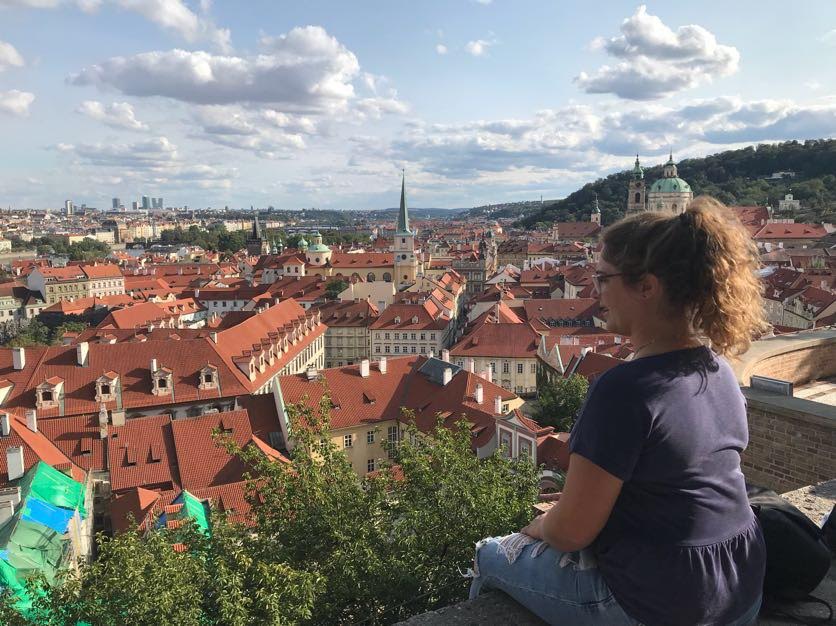

Petrin Hill was a short walk from Prague Castle, but don’t be fooled Prague is not a city built on grids. The roads are windy and aren’t always intuitive to navigate. Also, there’s a reason Petrin Hill is named such. Once we made it to the park, we opted to take the tram to the top of the Hill (though you could also walk if you wanted). We should have gone to the Observatory first since it was the first exhibit on the Hill to close, as we later learned. Instead, we followed the crowd to the Petrin Tower. If the tower looks familiar, it’s because it was inspired by the Eiffel Tower (though it’s 1/5 smaller). This time we took 299 steps to the top lookout deck. This was an overwhelming experience because of the number of people crowded into the small space. In all honestly, we probably had a better/closer view of the city from Prague Castle. There is also a Mirror Maze on the Hill that I would suggest skipping. It’s a glamorized version of various mirror houses you’ve already been to.

Our first dine-in restaurant experience in Prague was interesting, to say the least. The wait staff at the Italian place we chose to eat at were seemingly very unimpressed with us from the moment we stepped in. We thought perhaps it was because we were Americans, who knows. When it came time to pay, the server brought our bill and a card reader to the table. He noted that the service was not included in the bill. We later confirmed that 10% tipping is indeed normal but at the time we didn’t think it was customary. Oops… We learn from our mistakes.
Day Two
We kicked off the day with breakfast at Bohemia Bagel which was recommended to me by a coworker who had studied abroad while in college. It was delightful and also conveniently placed us right next to the notable Old Charles Bridge to start our day. We strategically planned to cross the bridge early in the morning because we had noticed the day before it was overly crowded with people later (as it is a pedestrian-only bridge). You know what they say, the early bird gets the worm. Or in our case the photos without a couple dozen tourists photo bombing. The bridge is lined with 15 statues on each side (so 30 in total). While the original statues were once displayed, they have since been replaced by replicas. The statue pictured below is the only one of women on the entire bridge!
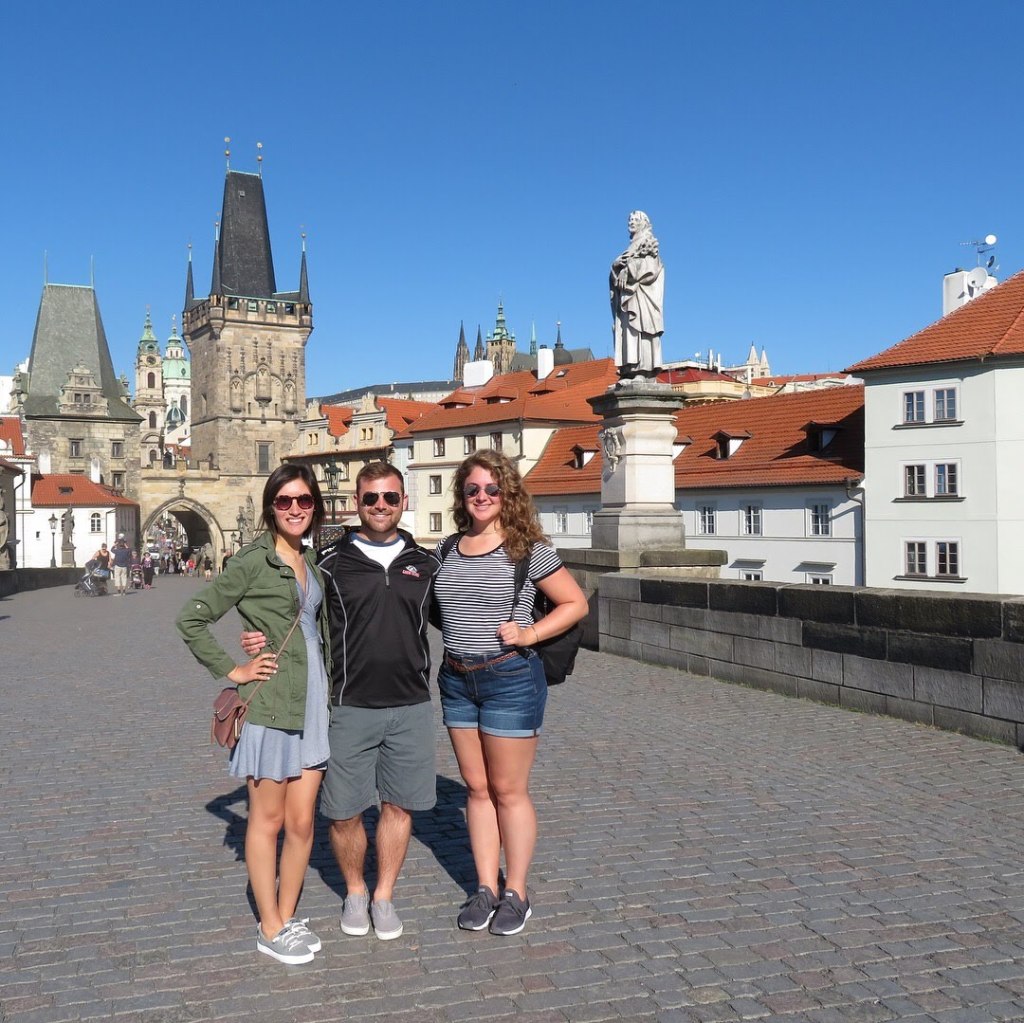



During our time in Prague, we noticed there was a lot of construction happening across the city. I had assumed this was normal, however, our beer tour guide later shared with us that the city was preparing to celebrate its 100th anniversary in 2018. Even though the country split from Czechoslovakia in 1993, both the Czech Republic and Slovakia planned to celebrate the First Republic declared in 1918 (which occurred in October). The notable Astronomical Clock in Old Town was under renovation when we visited so we didn’t get to see it in its ordinary state. However, fresh off its 100th anniversary, you can bet the city is in top shape if you’re planning to visit.
As you wander around Old Town (located across the Old Charles Bridge) and the surrounding area, keep your eyes peeled for the sky. For some reason, a 7-foot statue of Sigmund Freud hangs from a building top. We made our way around the Old Town area to New Town taking in the sights along the way. Eventually, we found our way to the Museum of Communism. This was interesting because I admittedly didn’t previously know much about the Eastern world or Czech Republic’s history.
In the past, when someone would mention beer in Europe, Germany was the first country that came to mind. For example, Munich is known for Oktoberfest. However, turns out, the Czech Republic consumes more beer per capita than any other country! In fact, it’s cheaper to buy a pint of beer than it is to buy a glass of water (yes, that’s right you have to buy water, even at restaurants). Here’s a word that you definitely need to know if you visit the Czech Republic (even if you’re not, it’s fun to say): cheers in Czech is “na dravi”, pronounced almost like the English phrase “nice driveway”.
So when in Prague, why not do a beer tour? We met up with our tour guide and people on the tour from England, Canada, and Argentina in Wenceslas Square. Our tour consisted of four stops: U Sadu, Vinohradský Pivovar, Kulovy Blesk, and U Sumavy. There were no more than 10 people in our tour group, which was a great size for getting to know one another.



We tried beers and traditional Czech snacks at each place. Pickled cheese is a favorite snack when hanging out at restaurants/bars and drinking, something about the tastes being complementary. I don’t remember the names of the snacks we had but take a look at some of the dishes below.


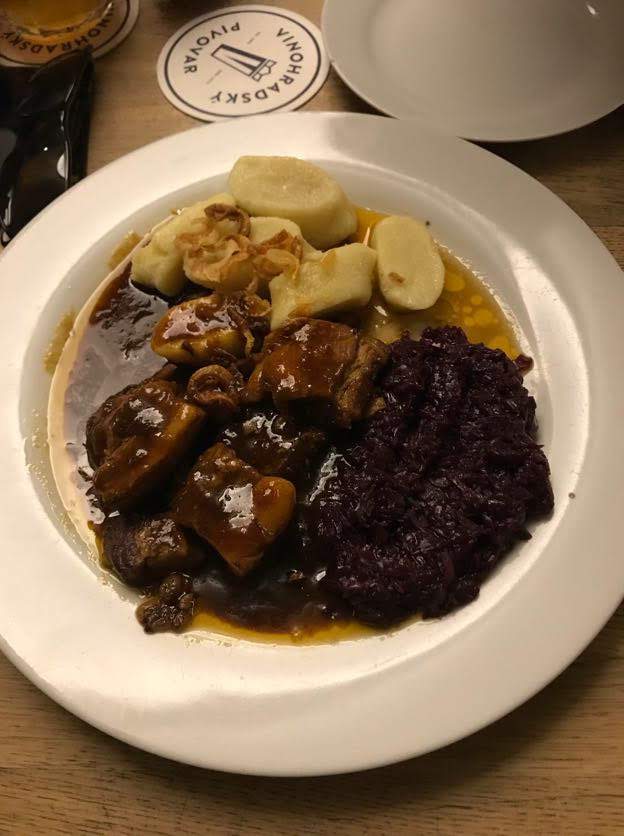

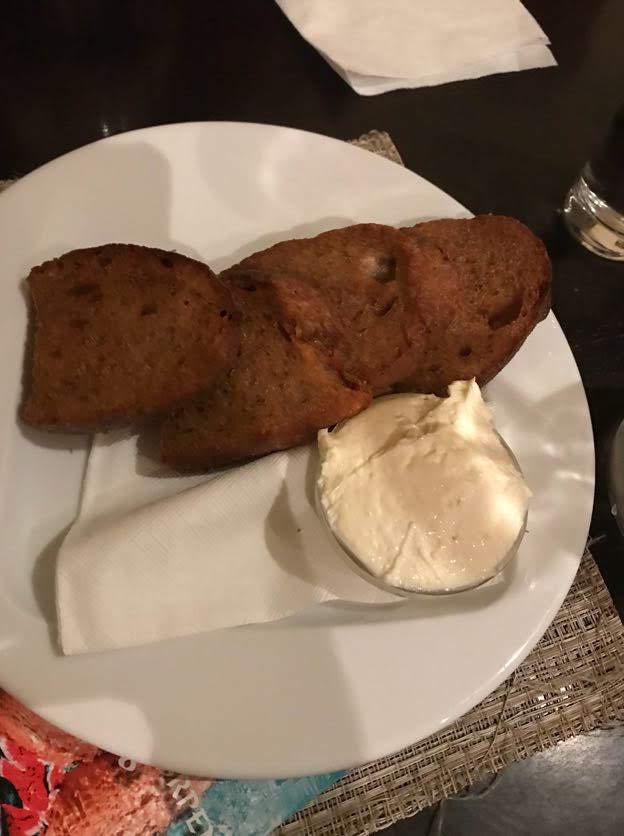
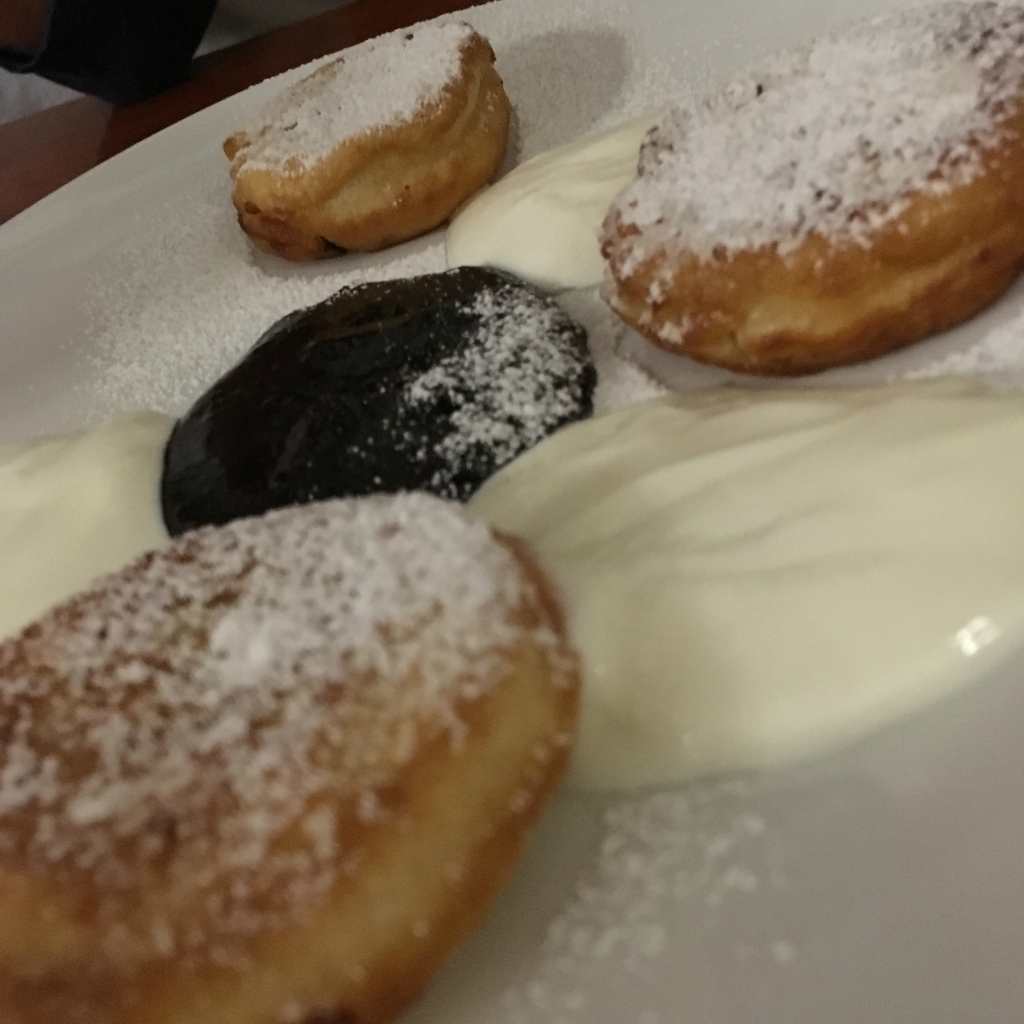
Day Three
It’s crazy how quickly you can get acquainted with a city when you’re on foot taking in the sights. After just two days in Prague, we felt like old pros navigating the city and recognizing where we had and hadn’t been. We had breakfast at Cafe Louve, which was founded in 1902, and notable, repeat visitors included Albert Einstein! Doesn’t that put time into perspective? A general observation about eating in Prague (and Europe in general) are the portion sizes. They are smaller, but much more reasonably sized than a plate in a traditional American restaurant.
After breakfast, we walked to the (John) Lennon Wall. The wall played a significant role in protecting protesters during the mid-1900s. Communist leaders were known to use violence against protesters. However, the French embassy, equipped with security cameras, is located across what is now known as the Lennon Wall. Since the communist regime leaders were fearful of what the French might do if they saw what was happening, the locations become a place for safe protesting. The wall continues to be a place where people are free to express their art so the wall continuously evolves. In fact, the wall is the only place where graffiti is legal in Prague. You can see we left our mark, in the video above.

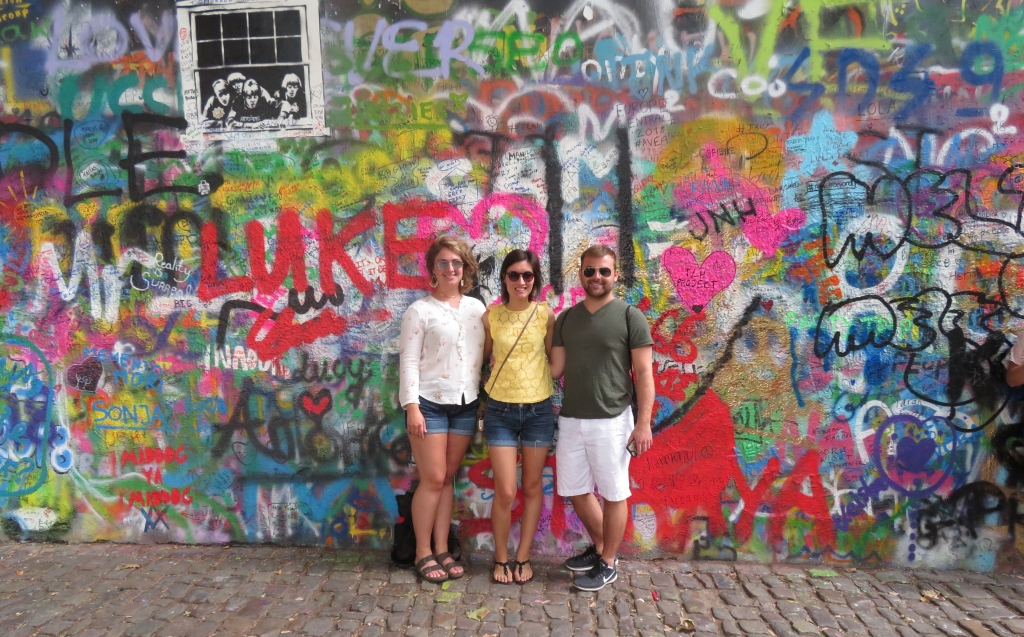

After the wall, we walked for what seemed like forever up a steep incline to find the Klasterni Pivovar Strahov. Remember what I said about the roads above? Fortunately, Google Maps tells you the incline to expect. (Un)fortunately, my friend didn’t tell us in advance. (You know who you are ;)) The brewery was located inside the Strahov Monastery where monks have supposedly been brewing award-winning beers for centuries.
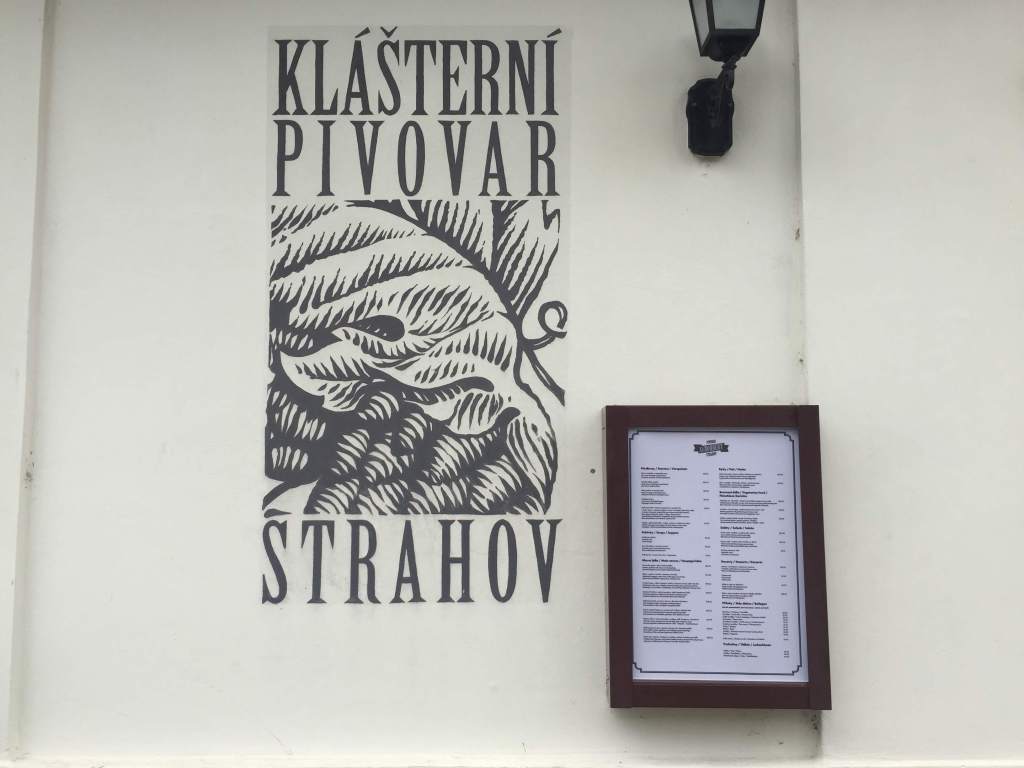


After some lunch and drinks at the brewery, we found some tasty, non-traditional, sweet treats on the streets of Prague.


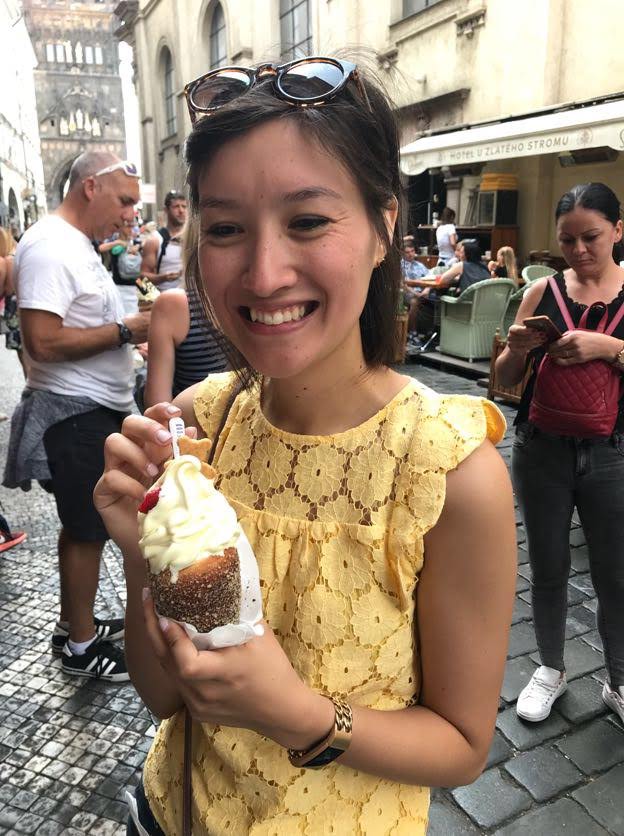
What else was there to do next but to hop on a paddle boat on the Vltava River. It was inexpensive to rent the boat for an hour, so we took it for a nice, relaxing ride down the river. How cute are my friends?




Day Four
The last and, quite possibly, the weirdest thing we did on this trip was going to the KGB Museum. At this point we had done everything else we wanted to do in Prague, so we figured we didn’t have anything to lose. Perhaps the first warning sign should have been how small the museum was. It was very much a hole in the wall. The museum was only open at the top of every hour for “official tours.” We later learned an official tour consisted of this Russian man, whose English was very difficult to understand, standing in a single room of the museum reenacting various “attack” scenes, showing off his weapon collection, and playing parade/marching scenes (which felt a little like propaganda) to the tune of techno music… See the brief video below to get a sense of our environment. At times, I wasn’t sure if I was safe and wanted so badly to walk out of the room/museum. Finally, after 350 CK (or ~15 USD) and over an hour later the tour was over!! Honestly, I don’t think I learned anything about the KGB. 2/3 people would not recommend it. Taylor shared she would recommend the museum because it was a unique experience you get nowhere else. She said, “We met a man immersed to the point of obsession, who would act out death scenes in gruesome detail. It was gripping like watching a car wreck, you can’t look away. He was unapologetically himself and that kind of confidence is something to behold, even if at times it put me on edge. I’ll never forget it!”
Next up, the terrific trio takes a train onward to Berlin, Germany, which happens to be one of Prague’s many twin cities. While trains are a cheap way to get around Europe, this particular one was not exactly pleasant, but we made the most of the 3-4 hour trip.

With Love,
Jamie ♥